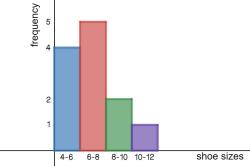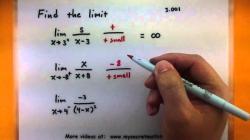How to find domain on a calculator?
Finding the domain of a function involves identifying all possible input values for which the function is defined. Calculators, especially graphing calculators, can be helpful in visualizing and exploring the domain of a function graphically. However, they don't provide a direct function for finding the domain. Here are steps you can follow:
For Piecewise or Explicit Functions:
Enter the Function:
- Use the calculator to input the function you want to find the domain for. Make sure you use the correct syntax.
Graph the Function:
- Graphing calculators can provide a visual representation of the function. Look for any gaps, jumps, or vertical asymptotes in the graph.
Analyze the Graph:
- Examine the graph to identify any x-values for which the function is undefined. These can include vertical asymptotes, points of discontinuity, or places where the function is not defined.
Determine the Domain:
- Based on your analysis, determine the x-values that make the function undefined. The domain is then the set of all real numbers that don't include these values.
For Implicit Functions:
Enter the Equation:
- If you have an implicit function (an equation with x and y), you'll need to solve for y explicitly to analyze the domain.
Graph the Relation:
- Use the graphing calculator to graph the relation represented by the equation. Look for any restrictions on x-values.
Analyze the Graph:
- Examine the graph to identify any x-values for which there is no corresponding y-value. These points may indicate a restriction on the domain.
Determine the Domain:
- Based on your analysis, determine the x-values that make the equation undefined or have no corresponding y-value. The domain is then the set of all real numbers that don't include these values.
Remember that these steps provide a graphical approach to finding the domain. For a more analytical approach or for functions expressed algebraically, you may need to consider restrictions on the variables based on the mathematical properties of the function (e.g., square roots, denominators, logarithms).
Always interpret the results in the context of the mathematical properties of the function and any specific conditions or constraints stated in the problem. If you're dealing with more complex functions or if you're unsure, seeking the guidance of a teacher, tutor, or a more advanced calculator software may be beneficial.
Are there calculators or tools available to assist in determining the domain of functions?
Yes, there are calculators and tools available to assist in determining the domain of functions. These tools can be used to automate the process of finding the domain, which can be helpful for functions with complex or difficult-to-analyze domains.
One type of tool that can be used to find the domain of functions is a graphing calculator. Graphing calculators can be used to graph the function and then identify the values of the input for which the function is undefined. For example, the function f(x)=x1 is undefined when x=0. This can be seen by graphing the function, as shown below.
y = 1/x
[Image of a graph of the function y=1/x]
The graph of the function shows that the function approaches infinity as x approaches zero from either side. This means that the function is undefined at x=0.
Another type of tool that can be used to find the domain of functions is a function grapher. Function graphers are similar to graphing calculators, but they often have more features that can be used to analyze functions. For example, some function graphers can be used to find the vertical asymptotes of a function. Vertical asymptotes occur when the function approaches infinity or negative infinity as the input approaches a certain value. These values are often excluded from the domain of the function.
Finally, there are a number of online tools that can be used to find the domain of functions. These tools can be accessed from any computer with an internet connection. Some of these tools are free to use, while others require a subscription.
How can technology aid in finding the domain of equations using calculators or software?
Technology can aid in finding the domain of equations in a number of ways. First, technology can be used to automate the process of finding the domain, which can save time and effort. Second, technology can be used to analyze functions that would be difficult or impossible to analyze by hand. Third, technology can be used to visualize the domain of functions, which can help to understand the relationship between the input and output of the function.
Here are some specific examples of how technology can be used to find the domain of equations:
- Graphing calculators can be used to graph the function and then identify the values of the input for which the function is undefined.
- Function graphers can be used to find the vertical asymptotes of a function, which are often excluded from the domain of the function.
- Online tools can be used to find the domain of functions, even for functions with complex or difficult-to-analyze domains.
In addition to these specific examples, technology can also be used to find the domain of equations in a more general way. For example, technology can be used to solve equations for the input, which can then be analyzed to determine the values of the input for which the equation has a solution.
Overall, technology can be a valuable tool for finding the domain of equations. Technology can save time and effort, allow for the analysis of complex functions, and provide a visual representation of the domain.











